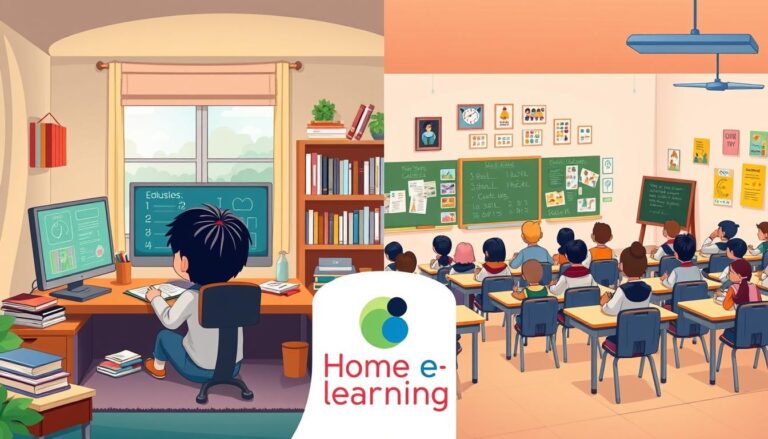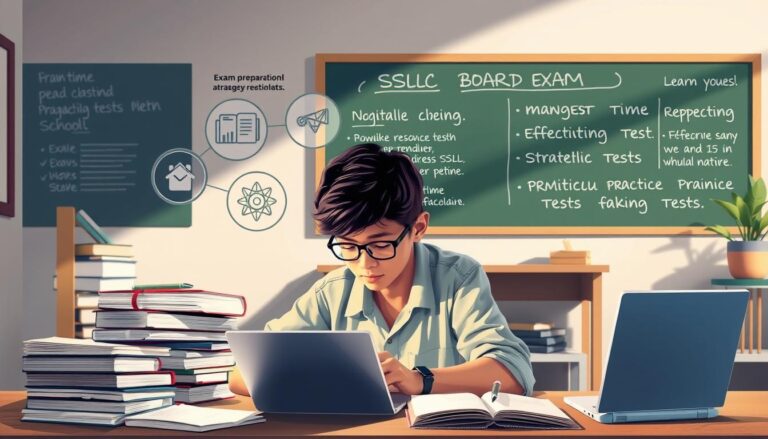Tips for Helping Struggling Readers in Virtual Classes
Did you know that early reading proficiency can shape a student’s academic future? According to a 2020 report by the National Center for Education Statistics, students who master reading by third grade are more likely to succeed in school. But what happens when learners face challenges in virtual classrooms?
Comprehension and skill development are crucial for lifelong learning. Yet, many students struggle without the in-person guidance they need. This gap can lead to frustration and hinder their progress. How can educators bridge this divide and foster success in online settings?
We’re here to explore practical, data-driven methods to enhance reading proficiency. Our focus is on innovative approaches tailored to today’s digital classrooms. Let’s dive into actionable strategies that can make a real difference for students.
Understanding the Challenges of Online Reading Instruction
The shift to digital classrooms has introduced unique challenges for both teachers and learners. One of the most significant hurdles is the lack of physical presence, which makes it harder to gauge comprehension and provide immediate feedback. This absence of in-person cues can lead to disengagement and frustration for students.
Common Obstacles in Virtual Classrooms
In online settings, limited interaction often reduces student engagement. Teachers find it challenging to monitor progress effectively, as they cannot observe body language or facial expressions. This makes it harder to identify struggling readers and provide timely assistance.
Another issue is the difficulty in fostering group activities. Small group discussions, which are vital for comprehension, are harder to organize and manage online. Without proper tools, these sessions can become less effective, leaving students feeling isolated.
Overcoming Technological Barriers
Technological issues, such as inconsistent internet access, can disrupt learning. Teachers must find ways to minimize these barriers by using reliable platforms and tools. For example, digital annotation software can help students interact with texts more effectively.
Clear communication channels are essential. Teachers should establish regular check-ins and use messaging apps to stay connected with students. This ensures that learners feel supported and can ask for help when needed.
| Challenge | Solution |
|---|---|
| Limited interaction | Use breakout rooms for small group activities |
| Technological issues | Provide access to reliable tools and platforms |
| Lack of immediate feedback | Schedule regular one-on-one check-ins |
| Disengagement | Incorporate interactive digital tools |
By addressing these challenges, teachers can create a more effective learning environment. Innovative methods and digital tools can help bridge the gap, ensuring that students receive the support they need to succeed.
Creating an Engaging Virtual Reading Environment
Building a dynamic online environment starts with understanding diverse learning needs. Every student has unique preferences and abilities, and tailoring the classroom to these differences is key. By combining structure and innovation, we can foster a space where learners thrive.
Leveraging Multimedia Tools for Diverse Learning Styles
Multimedia tools like videos, audiobooks, and interactive quizzes can transform the learning experience. These resources cater to various levels, ensuring that every student can engage at their own pace. For example, audiobooks help auditory learners, while visual learners benefit from illustrated texts.
Interactive tools also encourage students to read aloud and participate actively. This approach not only builds confidence but also improves comprehension. By incorporating these methods, we create a setting that feels inclusive and motivating.
Designing a Structured Digital Classroom
A well-organized classroom is essential for maintaining focus and productivity. Clear instructions and consistent routines help students stay on task. For instance, setting specific times for small group discussions ensures everyone gets a chance to participate.
Pacing is another critical factor. Allocating enough time for each activity allows students to read and respond effectively. This structure minimizes distractions and maximizes engagement, making the learning process smoother for everyone.
Implementing Virtual Reading Support Strategies
Effective instruction combines the science of learning with practical methods. For students to succeed, we must focus on both decoding and comprehension. These skills are essential for mastering complex texts and building confidence.
Understanding the science behind word recognition is crucial. Research shows that explicit instruction in phonics and vocabulary significantly improves outcomes. By breaking down texts into manageable parts, we help students interact with content more effectively.
We outline specific instructional strategies to empower teachers. Clear, step-by-step guidance ensures students grasp foundational skills. For example, using digital tools to highlight key words and phrases can enhance understanding.
Here are some actionable ideas to integrate into your curriculum:
| Strategy | Implementation |
|---|---|
| Phonics Practice | Use interactive apps to reinforce sound-letter relationships. |
| Vocabulary Building | Introduce new words with definitions and examples. |
| Guided Reading | Schedule small group sessions for focused instruction. |
| Comprehension Checks | Use quizzes to assess understanding of key concepts. |
These strategies can be seamlessly incorporated into existing lessons. By blending theory and practice, we create a balanced approach that benefits all learners. For more insights, explore adapting reading comprehension instruction.
Innovative ideas and clear instruction can drastically improve outcomes. Let’s focus on empowering students to become confident, independent readers.
Personalizing Reading Instruction in Online Settings
Personalized instruction is a game-changer in online learning environments. It allows educators to meet the unique needs of each student, ensuring no one is left behind. By tailoring lessons to individual strengths and challenges, we can create a more inclusive and effective learning experience.
Data-Driven Approaches to Tailor Instruction
Using data to guide instruction is essential in online settings. Diagnostic tests and benchmarks help identify areas where students excel or struggle. This information allows us to adjust lessons, ensuring every learner receives the right level of support.
Digital tools like analytics platforms provide real-time insights into student progress. These tools help us track performance and make informed decisions. For example, if a student struggles with comprehension, we can assign targeted exercises to improve their skills.
Here are some practical methods to personalize instruction:
- Use formative assessments to monitor progress and adjust lessons accordingly.
- Create individualized learning paths based on student data.
- Incorporate diverse materials, such as audiobooks and interactive quizzes, to cater to different learning styles.
By focusing on data-driven methods, we can ensure that every student receives the support they need to succeed. This approach not only improves outcomes but also fosters a positive relationship with learning.
Encouraging Active Reading and Participation
Active participation in learning transforms how students interact with content. It fosters deeper comprehension and critical thinking, which are essential for academic growth. By using innovative tools and methods, we can create an environment where every student feels engaged and motivated.
Interactive Reading Techniques with Digital Annotation
Digital annotation tools offer a unique opportunity for students to interact with texts. Highlighting key points, adding notes, and marking sections helps them process information more effectively. This method not only improves comprehension but also encourages active engagement.
For example, tools like digital highlighters allow students to focus on important details. Limiting annotations to 20% of the text ensures they remain engaged without feeling overwhelmed. This process makes learning more interactive and meaningful.
Fostering Meaningful Class Discussions
Organizing virtual book clubs and discussion groups can significantly enhance engagement. These activities provide a platform for students to share ideas and learn from each other. Regular check-ins ensure everyone stays involved and receives timely feedback.
Here are some strategies to promote active participation:
- Use breakout rooms for small group discussions.
- Assign reading partners to encourage collaboration.
- Incorporate quizzes to assess understanding and provide feedback.
By offering diverse resources and creating opportunities for interaction, we can address individual needs and foster a supportive learning environment. For more insights on building a collaborative community, explore our guide on online school education.
Building a Collaborative Online Reading Community
Collaboration in learning fosters deeper understanding and stronger connections among students. In online settings, creating a sense of community is essential for engagement and success. When students feel connected, they are more likely to participate actively and share their ideas.
One effective way to build this community is through virtual book clubs and peer groups. These initiatives provide a shared space for discussion, allowing students to exchange responses and access additional materials. By fostering inclusivity, we ensure every student feels valued and involved.
Creating Virtual Book Clubs and Peer Groups
Virtual book clubs and peer groups are powerful tools for enhancing comprehension. They encourage students to interact with texts and each other, building confidence and critical thinking skills. Teachers can structure these sessions to focus on specific themes or skills, making learning more meaningful.
Here are some strategies to implement these groups effectively:
- Use platforms like Flipgrid or Perusall to facilitate discussions and annotations.
- Assign roles, such as discussion leader or note-taker, to encourage participation.
- Provide clear guidelines to ensure respectful and productive conversations.
These methods not only improve comprehension but also create a supportive network where students can thrive.
Fostering an Inclusive Classroom Environment
An inclusive classroom ensures every student has the opportunity to participate. Teachers can achieve this by offering diverse materials and adapting activities to different learning styles. For example, audiobooks and interactive quizzes cater to varied preferences, making learning accessible to all.
Regular feedback is also crucial. By providing constructive responses, we help students understand their progress and areas for improvement. This approach builds trust and encourages continuous growth.
| Strategy | Implementation |
|---|---|
| Discussion Platforms | Use tools like Flipgrid for interactive discussions. |
| Role Assignments | Assign roles to ensure balanced participation. |
| Diverse Materials | Incorporate audiobooks, videos, and quizzes. |
| Feedback Sessions | Schedule regular check-ins for constructive responses. |
By focusing on collaboration and inclusivity, we create a dynamic learning environment. Students not only improve their skills but also develop a sense of belonging and confidence in their abilities.
Integrating Feedback and Continuous Improvement for Our Virtual Classrooms
Feedback and continuous improvement are essential for refining teaching methods and enhancing student outcomes. By gathering information from student responses, we can tailor instruction to meet their needs effectively. This approach ensures that every part of the learning process is optimized for success.
Constructive feedback plays a key role in empowering teachers to teach students more effectively. Regular read aloud sessions and formative assessments are integral parts of a dynamic curriculum. These methods not only improve comprehension but also foster a culture of growth and adaptability.
Here are some strategies to integrate feedback and improvement:
- Use tools like Google Forms or Padlet to collect student feedback efficiently.
- Schedule regular one-on-one check-ins to address individual concerns.
- Partner with schools to access professional development resources for long-term growth.
Continuous improvement also involves adapting to technological advancements. Platforms like Flipgrid and Edpuzzle provide real-time insights into student progress. These tools help us identify areas for enhancement and implement targeted solutions.
By focusing on feedback and improvement, we create a learning environment that supports both teachers and students. This approach ensures that every part of the curriculum is aligned with our goals for academic success.
Conclusion
Effective teaching in digital environments requires adaptability and innovation. There is no one-size-fits-all approach, and educators must tailor their methods to meet diverse needs. By using tools like Google Classroom and fostering interactive activities, we can better engage students and enhance their learning experience.
Every step, from organizing group discussions to incorporating multimedia resources, contributes to a more dynamic classroom. It’s essential to remain flexible and open to new ideas, ensuring that each year brings fresh opportunities for growth. Collaboration between teachers, schools, and technology is key to achieving long-term success.
Let’s continue to innovate and take actionable steps to create a more inclusive and effective learning environment. Together, we can make a lasting impact on student outcomes and inspire a love for learning.







